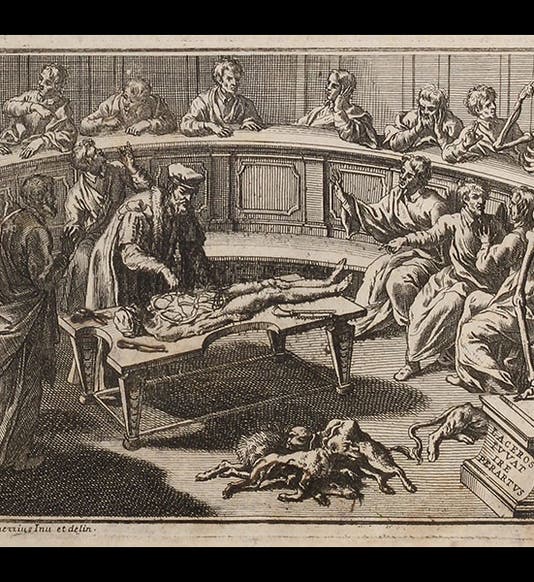Scientist of the Day - Giovanni Lancisi
Giovanni Maria Lancisi, an Italian physician, was born Oct. 26, 1654. Lancisi has some renown in the history of epidemiology for suggesting, in 1717, that the malaria that troubled Rome might be caused by insects breeding in the surrounding swamps, and that draining the swamps might just eliminate the insects and the disease. But Lancisi also has a place in the history of scholarship for recovering two lost 16th-century treatises of great importance and ensuring their publication. Bartolomeo Eustachi had written a treatise on anatomy, complete with copperplate illustrations, in 1552, but it was not published, for reasons unknown. Thirty years later, Michele Mercati, the director of the Vatican botanical garden and museum, wrote a treatise on fossils, and he too had the copper plates engraved for publication, but publication had not occurred before Mercati’s death in 1593, and the manuscript languished thereafter.
Lancisi unearthed both manuscripts in the Vatican Library, as well as the copper plates that had survived intact. The Eustachi work on anatomy was published first in 1714 as Tabulae anatomicae, and Mercati's Metallotheca appeared in 1717. Both are sumptuous works--they were published under the auspices of Pope Clement XI--and we are fortunate to have copies of each in the History of Science Collection, a 1st edition of Mercati, and a 2nd edition (1728) of Eustachi. Mercati was the Scientist of the Day on Apr. 13, 2016, and we displayed six plates from his book on that occasion. We show plates from the Eustachi work here. These are some of the most remarkable anatomical engravings of the period following the publication of Andreas Vesalius’ De fabrica (1543), and yet the Renaissance never saw them. Were it not for the conscientious efforts of Lancisi, we might never have seen them at all.
Dr. William B. Ashworth, Jr., Consultant for the History of Science, Linda Hall Library and Associate Professor, Department of History, University of Missouri-Kansas City. Comments or corrections are welcome; please direct to ashworthw@umkc.edu.












